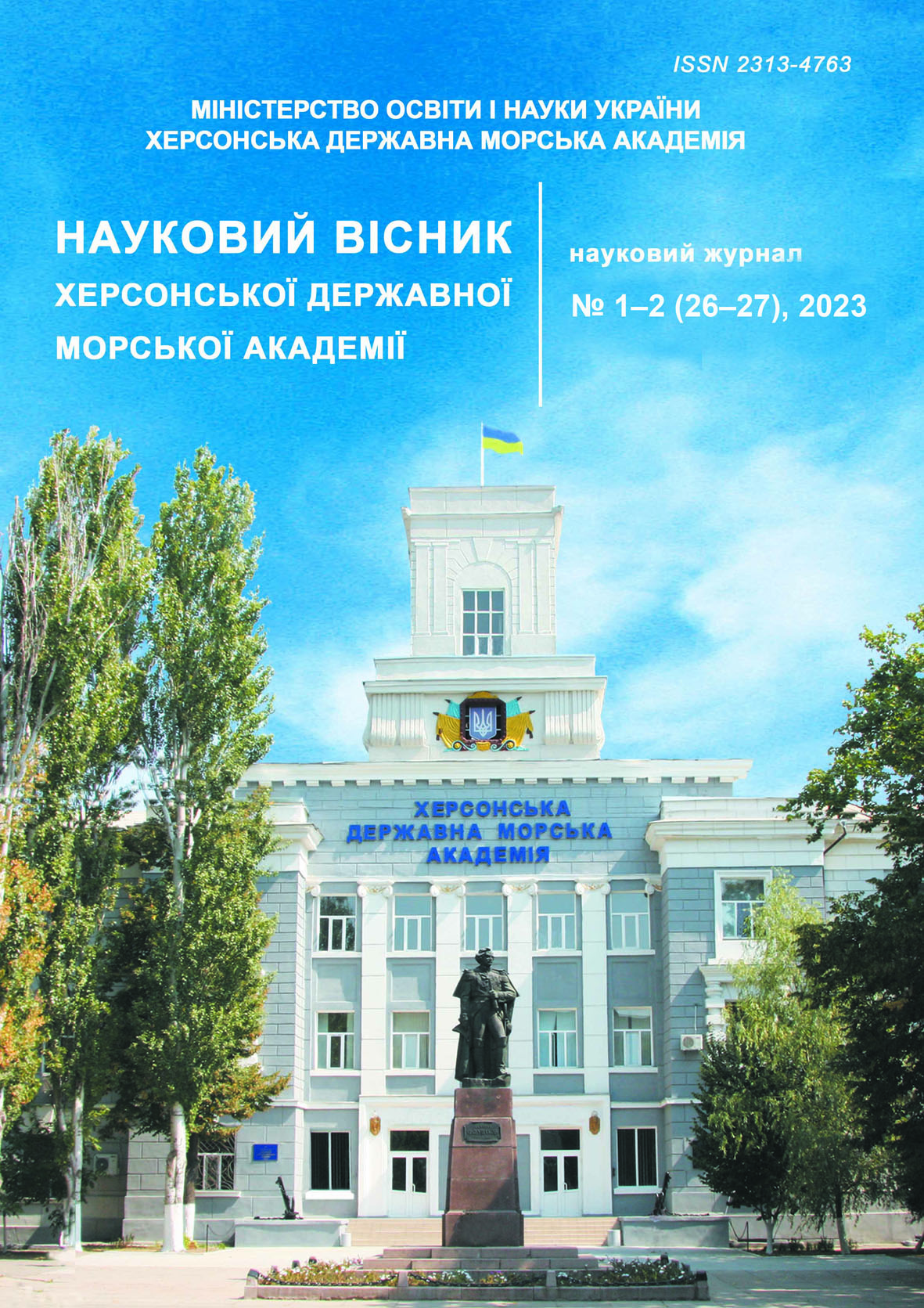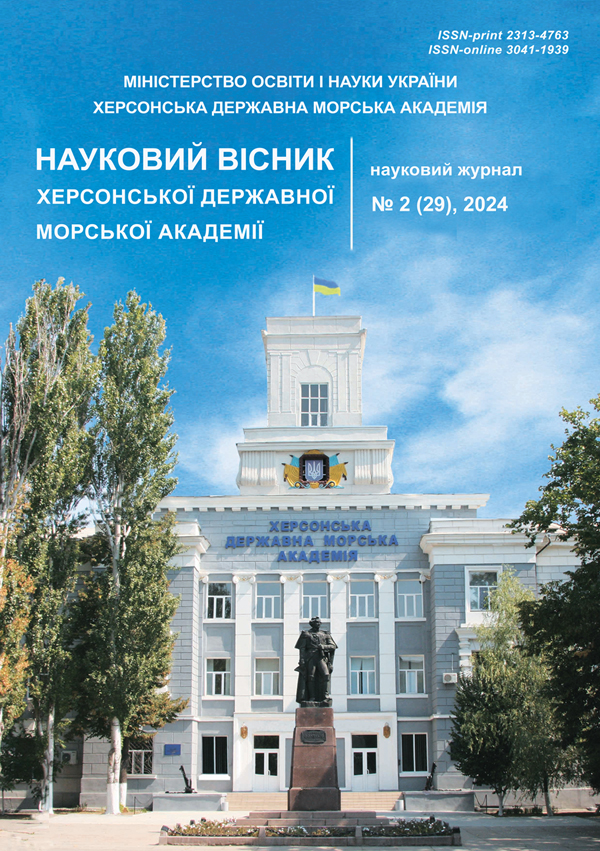INTEGRATION OF CHATGPT FOR DECISION-MAKING SUPPORT OF AUTONOMOUS VESSELS IN REAL-TIME MODE
https://doi.org/10.33815/2313-4763.2024.2.29.111-121
Abstract
The article explores the integration of the ChatGPT language model into autonomous vessel systems to support real-time decision-making processes, a critical component for improving maritime operations. The discussion highlights the primary functionalities of ChatGPT, such as analyzing complex navigation scenarios, planning efficient maneuvers, optimizing maritime routes, and seamlessly interacting with other onboard systems and coastal services. By leveraging these capabilities, autonomous vessels can operate with enhanced precision and adaptability.
A significant contribution of this research is the proposed modular architecture for integrating ChatGPT into the operational framework of autonomous vessels. The architecture is designed with distinct modules for data collection and processing, interfacing with the ChatGPT API, and executing decisions. These modules enable the system to gather information from diverse sources – including radars, cameras, GPS systems, and meteorological stations – and process it to ensure compatibility with ChatGPT’s analytical capabilities. The execution module translates ChatGPT’s recommendations into actionable commands for the vessel’s operational systems, such as navigation and collision avoidance mechanisms.
Special attention is given to practical use cases, including collision avoidance, adaptation to dynamic weather conditions, and navigation through high-traffic maritime regions. For instance, when encountering another vessel on its trajectory, ChatGPT analyzes sensor data such as the distance, speed, and direction of both vessels to recommend adjustments in course and speed. This rapid and accurate analysis minimizes collision risks, even in high-pressure scenarios. Another case involves rerouting the vessel during adverse weather conditions or when the designated port is congested. ChatGPT generates alternative routes by analyzing real-time weather data, port availability, and vessel positioning, thereby ensuring timely and safe arrivals.
The study also addresses several challenges inherent in integrating AI systems like ChatGPT into maritime operations. Data processing delays, for instance, are mitigated through optimized communication protocols and the use of local AI models to supplement cloud-based systems. Security is another critical area, with the architecture employing encrypted data transmission channels and robust cybersecurity measures to prevent unauthorized access. Moreover, the adaptability of ChatGPT is continuously enhanced through iterative learning, enabling it to handle novel and unforeseen maritime scenarios effectively.
References
2. Korostin, O. O. (2024). Efektyvnist rozpiznavannia tekstu v avtomatyzatsii mizhnarodnykh morskykh perevezen za dopomohoiu shtuchnoho intelektu, Tavriiskyi naukovyi visnyk. № 3, 29–38.
3. OpenAI. ChatGPT API Documentation [Electronic resource]. Available at: https://platform.openai.com.
4. IMO (2021). Guidelines for Autonomous Maritime Operations. International Maritime Organization. 1–50.
5. Smith, R. (2023). Autonomous Navigation in Maritime Systems. A Distributed Approach, Journal of Maritime Technology and Engineering. Vol. 12, No. 4, 101–120.
6. Zhang, W., Li, H. (2022). Optimizing Routes in Autonomous Vessels Using AI, Applied Ocean Research. 192–205.
7. Miller, J. (2022). Safety Standards in AI-Controlled Maritime Systems, Maritime Safety Journal. 23–53.
8. Yamada, T., Nakajima, M. (2023). Hybrid Systems in Maritime Autonomy, Journal of Robotics and Autonomous Systems. 32–54.
9. Brown, P. (2022). Artificial Intelligence in Maritime Operations, AI & Marine Tech Journal. 23–43.
10. Johansson, K. (2023). Distributed Systems for Autonomous Navigation, IEEE Transactions on Intelligent Transportation Systems. 54–99.
11. Zinchenko, S. M., Lyashenko, V. G. (2017). Usage of Neural Network Model of the Ship for Control Tasks, Scientific Bulletin of KSMA. No. 2 (17), 231–237.
12. Kozachok, Y. A. (2024). Automation of Information System Architecture Design for Utility Payments Processing Using Artificial Intelligence, Tavriyskyi Scientific Bulletin. Series: Technical Sciences. (2), 62–72.
13. Wang, X., Liu, Y., Zhang, Y. (2023). Deep Learning-Based Collision Avoidance for Autonomous Surface Vessels, Ocean Engineering. Vol. 250, 876.
14. Martinez, C., Perez, D. (2022). Machine Learning Approaches in Maritime Navigation Systems, IEEE Transactions on Intelligent Transportation Systems. Vol. 23(5), 4210–4220.
15. Müller, J., Schmidt, T. (2023). Enhancing Maritime Safety with AI-Based Decision Support Systems, Safety Science. Vol. 157, 105921.
16. Zinchenko, S. N., Lyashenko, V. G., Shalaeva, A. A. (2017). Otsenka manevrennykh vozmozhnostey sudna s pomoshchyu neyrosetevoy modeli, sinteziruemoy v protsesse yego shtatnoy ekspluatatsii // Materialy IV MNPK «Bezopasnost zhiznedeyatelnosti na transporte i proizvodstve: obrazovanie, nauka, praktika», Kherson, 236–240.
17. Deshayes, P. H. “First electric autonomous cargo ship launched in Norway”, [Online]. https://protect.kongsberg.com/kongsberg---the-first-electric-autonomous-ship-ever.






